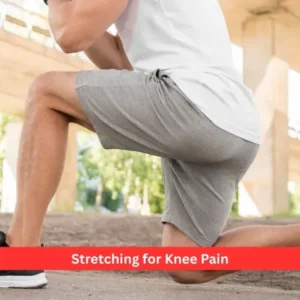The brachialis muscle is somewhat ignored in most upper arm exercises, but it is an important component of the movement of the upper arm. In this case, one must have a good understanding of the look of the brachialis muscle. This is related to their origin, location and role of the biceps in the movement of the upper arm is a subject of exploration.
For that reason, the muscle is situated below the biceps and adjacent to the triceps; the brachialis is responsible for flexing and supinating the elbow joint, an action that turns the palm up. Building up this muscle can also help enhance the strength of the arm and decrease the probability of future shoulder issues. In this article, you will learn what the brachialis is, how it works as part of your muscular system, and what specific exercises will most effectively work on this muscle to build up the muscles in your upper arm.
Analysis of the Brachialis Muscle
The brachialis is situated in the middle of the arm between the bicipital and tricipital sulcus, arising from the lower atmospheric surface of the humerus and inserting on the body of the ulna. In this case, the biceps brachii muscle is seated at a higher position as compared to the brachialis muscle and takes part in elbow flexion and supination. The brachialis muscle arises from the medial margin of the tendon of the coracobrachialis and the anterior aspect of the distal half of the shaft of the humerus.
While it may be a smaller muscle in comparison to the more famous biceps muscle, the brachialis muscle is essential for flexion at the elbow, that is, bending your arm at the elbow joint. The biceps flex the elbow and rotate the forearm, but they do the latter also while the wrist is fixed, and at the former, the brachialis will act, although it is a flexor. Not only does this muscle become more muscular to the eye, but more importantly, it enhances overall performance for many ordinary and athletic actions.

Here is the list of exercises that lay stress on the brachialis muscles:
The brachialis and biceps muscles respectively flex the elbow joint and are highly useful in these exercises.
1. Hammer curl for biceps brachii
The hammer curl is considered one of the finest movements that effectively target the biceps brachialis. It specifically aims at the brachialis muscle more than most bicep curls due to the hammer grip, where the palm faces the body.
- How to do it: Stiff-legs squat with dumbbells gripped in each hand by your sides, palms out to the sides.
- Make sure to ensure that your elbows are next to your body, and then pull the dumbbells to your shoulders.
- This is the primary phase of the dumbbell exercise routine. Bring the dumbbells to shoulder elevation and ensure your palms are facing forward, delay slightly, then reduce the weights back to the initial position.
- Do 3 sets of 10-12 reps.
- Why it works: As in the neutral grip, the brachialis muscle, which is the main elbow flexor, takes most of the load.
2. Reverse curls
The reverse curl is another fantastic move to add to the list of exercises targeting the brachialis muscle. Done with an overhand grip, this exercise minimises the involvement of the biceps and targets the brachialis more. During this exercise, it is important to ensure that the brachialis tendon is protected, bearing in mind that it is the primary mover during flexion of the elbow.
- How to do it: Standing, barbell or the EZ-curl bar in an overhand grip (the palms are facing down).
- Maintaining a position where your elbows are at your sides, then hoist the bar as far up to the shoulders as is possible.
- Stop at the lockout position, pause, then slowly return to the starting position.
- Do 3 sets of 8-10 reps.
- Why it works: The pronated (overhand) grip is highly effective for the development of brachialis force because few other exercises induce such a strong contraction in the brachialis muscle.
3. Do the Zottman curl
The Zottman curl is a variation of both the biceps curl and the reverse curl, which exercises the biceps and the forearms effectively. As I mentioned before, this exercise works both the biceps brachii and brachialis muscles, but the lowering portion is especially effective at hitting the brachialis.
- How to do it: Take a dumbbell in each hand with the palms up (bent over grip).
- This movement should be done the same as any of the regular biceps curls with the dumbbells.
- When at the peak of the movement, turn the wrists so the palms face down (pronation grip).
- Now, slowly lower the dumbbells into this position.
- Do 3 sets of 8-10 reps.
- Why it works: By flexing the arm supinated during the curl and pointing the hand during the lowering phase, both the biceps brachii and brachi stensor muscles are worked; the reverse curl phase specifically provides emphasis on the brachialis muscles.
4. Neutral-Grip Preacher Curl
In this way, the Preacher bench restricts the movement of the other muscles of the body, thus leaving more muscular tension on the arms. For shoulder mound crippling, a neutral grip (palms facing in) recruits the brachialis to a greater extent. A trainer needs to know how exactly muscles such as the brachialis work and where they start and finish.
- How to do it: -This should be done while sitting on a Preacher Curl bench, with a barbell or dumbbell gripped with a neutral grip EZ-curl.
- Slowly bring it to the shoulder level and then place the elbows backwards towards the bench.
- At the peak of motion, stop and for a while and then have the weight be brought down to the starting position.
- Do 3 sets of 10-12 reps.
- Why it works: The Preacher bench positions eliminate biceps contribution, and a neutral grip provides even greater activation of the brachialis.

5. Concentration curl with prone grip
Concentration curls work great to minimise the involvement of other muscles and hit the brachialis muscle only.
- How to do it: Standing, assume a position with your legs somewhat spread widely apart and seated onto a bench.
- Place your non-dumbbell hand behind you and on your opposite inner thigh, bend your elbow and try to get a hammer grip with your palms facing down.
- In this position, the handle of the dumbbell should be brought to shoulder level while concentrating on the brachialis muscle.
- Do ten- twelve repetitions per arm, 3 sets.
- The pronator teres adds to the formation of the forearm muscle mass, and more explicitly, it lies next to the brachialis muscle.
- Why it works: This muscle activation is unique in that the pronated grip during the concentration curl targets the brachialis, a muscle that is often overlooked in most other barbell and dumbbell movements.
6. Seated Neutral-Grip Cable Row
While many people probably perceive the seated neutral-grip cable row exercise as targeting only the back muscles, the brachialis muscle is also engaged.
- How to do it: – Stand on the two platforms of a neutral-grip cable rowing machine.
- Sweep the handle to your chest with your elbows in close, rather than extending it away from your body.
- After this, allow your fists to come back to the starting position.
- Perform 3 sets of 10-12 reps.
- Most of the nerve supply to the brachialis muscle comes from the musculocutaneous nerve, which is crucial in maintaining the muscle’s correct functioning during this program.
- Why it works: Therefore, the seated cable row and the neutral-grip exercise involve the brachialis muscle together with other muscles of the biceps and back.
7. Crossed Hammer Curls
The crossed hammer curl is an adaptation of the hammer curl in that it uses much of the brachialis by altering the direction of the curl.
- How to do it: Starting position: To do this exercise, stand with your legs parallel about hip-width distance apart from each other, holding a dumbbell in each hand.
- With your right hand, grasp one dumbbell and raise it above the corresponding shoulder.
- Lower the weights and perform the same on the other arm.
- Perform 3 sets of 8-10 repetitions on each arm/portion of the body being strengthened.
- Why it works: The crossed movement seems to enhance recruitment of the brachialis because the angle of resistance is different from that of the baseball motion, and this may increase activity. That means the brachialis muscle has, apart from flexor assistance, lateral innervations by the radial nerve.
8. Rubber-band hammer curl
The last exercise is a hammer curl using resistance bands to have a consistent tension on the brachialis at all the briefs of the thoroting movement.
- How to do it: Stance: Place yourself at the centre of an elastic band with your legs half a meter apart and your hands in the centre of the handles. Signal the bands towards the shoulders to increase the distance of your elbows from the torso.
- Bend your back slightly and start doing 3 sets of 12-15 reps.
- From recent literature, it is evident that the recurrent radial artery, as well as branches of the brachial artery and various collaterals, provide a major blood supply to the brachialis muscle.
- Why it works: Curl is an effective exercise because, by the use of resistance bands, the brachialis muscle can be stimulated at various points during the curl.

9. Overhand Spider Curl
In the spider curl, the arms are placed in a position where other muscles cannot help, and the one trying to throw must rely on arm movement. To popular intensity, it targets the brachialis muscle even more than the previous grip, which was the hammer grip. The origin of the recurrent radial artery is quite important as a contributor to the brachialis muscle blood supply from the branches of the brachial artery, which takes blood from branches of the ulnar collateral arteries.
- How to do it: Lie face down on an inclined bench, grab a barbell or a dumbbell with your palms down.
- Then you lowered your arms and had the weights touching your shoulders.
- Jog down and repeat for 3 groups of 10-12 times.
- Why it works: Spider curls help you get a good wash over the brachialis muscles without allowing the biceps brachii to have ample support and momentum to complete the curl.
10. Towel curls
This might be one of the most useful grips since it lets you easily work your brachialis while building up your grip strength at the same time.
- How to do it: Wear hand gloves, that’s it, take a hand near the handle of a barbell or kettlebell and hold a towel tightly around it.
- First, fold two opposite corners of the towel and twist both ends. You should pause sometimes on top and then pull the towel back to where it was initially again.
- Repeatition of 3 sets of 8-10 reps.
- Why it works: This way, in towel curl, the amount of weight to be held increases the brachialis contraction and also changes the load type. Branches of the ulnar collateral arteries may become anastomosed with those of the brachial artery and the radial recurrent artery to supply the brachialis muscle.

Solution
This muscular group is important for strong and balanced arm formation and, thus, higher functionality of your shoulder joint. With these elements incorporated in your training sessions, you’ll develop the capability of flexing your elbow and improve your grip force, whilst at the same time doing a lot to ensure that your shoulders are not damaged. From the hammer curl to the reverse curl, each of these exercises directly hits the brachialis muscles, so you can maintain your arm girth. Building the strength of this frequently neglected muscle will assist you in achieving astonishing changes to your arms and maintaining shoulder health by avoiding future issues.
Frequently Asked Questions
1. What does the brachialis muscle do?
- It helps bend the elbow.
- Regardless of the orientation of your hand in writing, it will write for you.
2. Why is the brachialis often ignored?
- It is far and small and located on the upper arm near the biceps brachii tendon.
- And that is why it is so often left out of workouts.
3. Which exercises work the brachialis best?
- Hammer curls, reverse curls and Zottman curls are names of three effective bicep curls.
- About this, target the brachialis more than usual curls.
4. Can training the brachialis prevent injuries?
- Yes, it supports the elbow and arm.
- Thus, having a strong brachialis can help to prevent shoulder issues, but a weak brachialis can cause shoulder issues.







